Understanding the Vocal Patterns of Oriental Cats
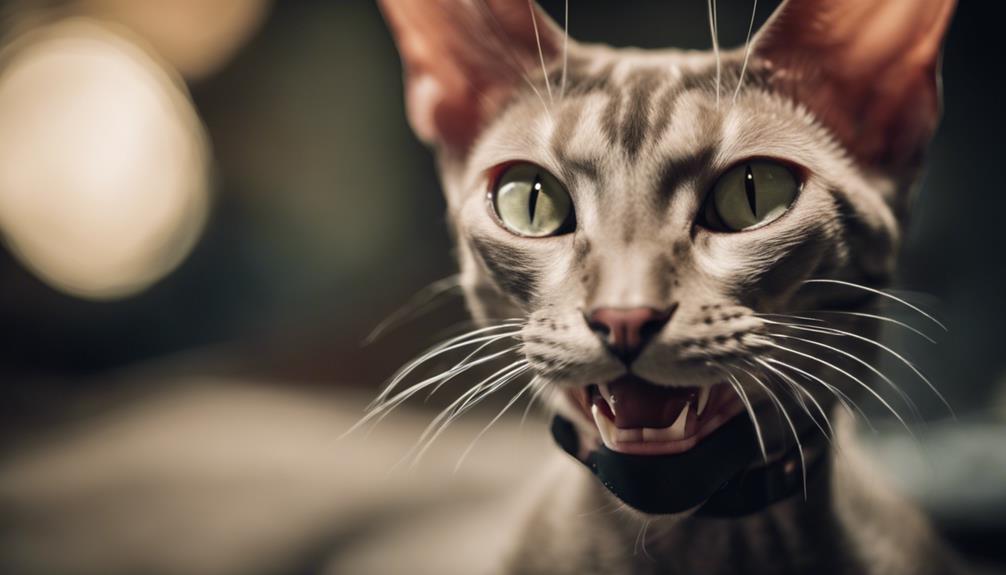
Oriental cats are known for their wide range of vocalizations, including loud meows, trills, and yowls. These cats are highly social and use their vocalizations to communicate with their human companions and other pets. Understanding their unique language can help strengthen the bond between owner and cat.
By paying close attention to the pitch, volume, and duration of an Oriental cat's meows, owners can decipher the meaning behind their feline friend's communication. These expressive cats often use different meows to express hunger, playfulness, or simply to seek attention. Responding to their vocal cues can help meet their needs and ensure a harmonious relationship between pet and owner.
Oriental cats are also known for their tendency to "talk back" to their owners, engaging in lively conversations filled with meows and chirps. This interactive communication style adds to the charm of these expressive felines and fosters a sense of companionship. Encouraging and responding to their vocalizations can create a rewarding and enriching experience for both the cat and its owner.
Oriental Shorthair Vocalization Overview
When observing Oriental Shorthairs, their vocalizations provide essential insights into their emotional states and needs. These cats are known for their expressive meows, using a variety of vocal cues to communicate with their owners. From short and sharp meows to long and drawn-out ones, Oriental Shorthairs convey a range of emotions, including hunger, thirst, loneliness, frustration, affection, discomfort, and disapproval through their vocalizations. By paying attention to the nuances in their meows, owners can better understand and meet their cats' needs effectively, strengthening the bond between human and feline.
Furthermore, alongside vocal communication, Oriental Shorthairs also use body language to express themselves. Understanding the context surrounding their meows and observing their accompanying body cues can offer valuable insights into an Oriental Shorthair's emotions and desires. By being attentive to both vocalizations and body language, owners can create a harmonious environment where their cats feel understood and cared for.
Origins and Evolution of Oriental Cat Sounds
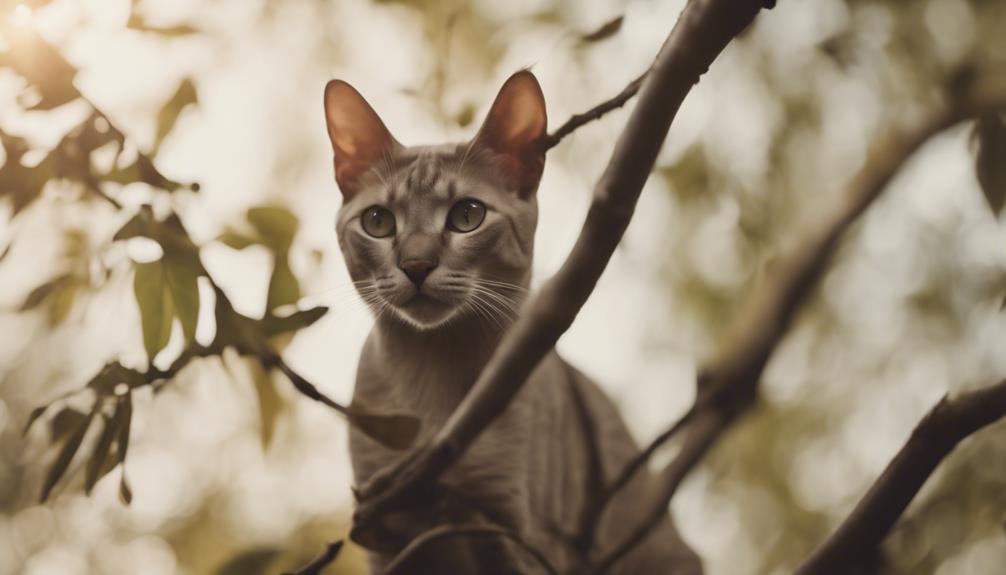
The vocal patterns of Oriental cats trace back to their Siamese lineage, renowned for their talkative demeanor. Through a timeline of selective breeding, these feline companions have developed distinct sounds that reflect their intelligence and sociability.
Exploring the origins of Oriental cat vocalizations unveils a rich evolutionary journey that has honed their expressive communication style.
Vocalization Origins
Originating from the expressive and melodious vocalizations of their Siamese ancestors, the vocal patterns of Oriental cats have evolved to reflect their unique breeding history and genetic background. Understanding the origins of these vocalizations sheds light on the bond between these felines and their human companions.
Here are four key points to consider:
- Siamese Influence: Oriental cats inherited their vocal prowess from their Siamese ancestors.
- Genetic Background: The breeding history and genetic makeup of Oriental cats play a significant role in shaping their vocal patterns.
- Communication and Intelligence: Vocalizations in Oriental cats serve as a vital form of communication, highlighting their intelligence and social nature.
- Bond with Humans: Delving into the origins of Oriental cat vocalizations can strengthen the bond between these felines and their human companions.
Sound Evolution Timeline
Exploring the gradual evolution of Oriental cat sounds unveils a captivating journey intertwined with their ancestral heritage and breeding legacy.
Originating in Southeast Asia, Oriental Shorthair cats' vocalizations were shaped by their breeding with Siamese cats, resulting in a unique communication style distinct from other cat breeds.
Through selective breeding practices, Oriental cats have honed specific vocal patterns that highlight their intelligent nature and expressive sounds.
The vocal evolution of Oriental cats showcases their innate ability to communicate effectively, making them renowned for their distinct and varied vocalizations.
This evolutionary timeline provides valuable insights into the intricate world of Oriental cat vocalizations, shedding light on the depth of their communication skills and the richness of their expressive sounds.
Deciphering Oriental Cat Vocalizations
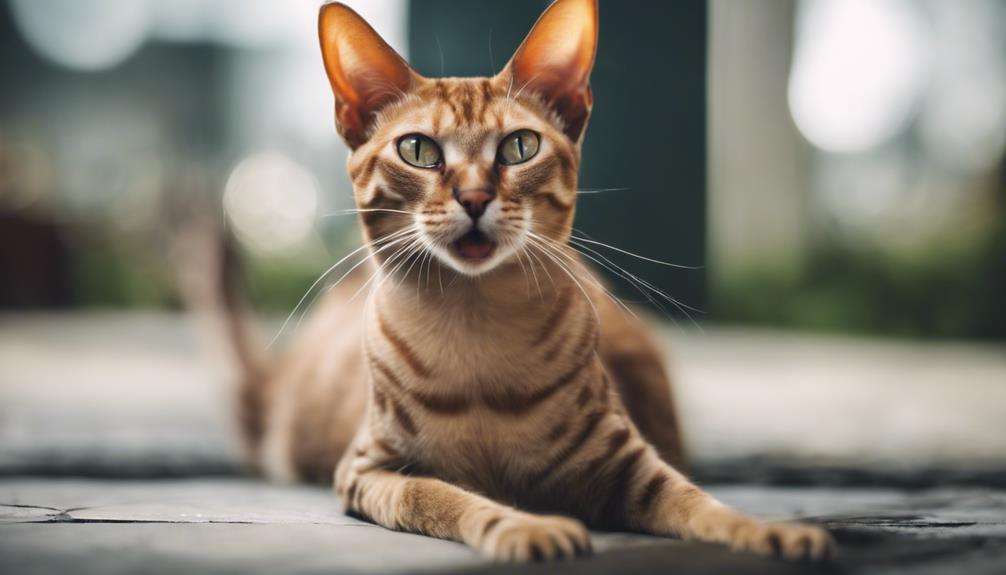
When trying to decipher Oriental cat vocalizations, observing their unique patterns and understanding the context becomes crucial. Here are some key points to consider:
- Variety of Vocalizations: Oriental cats produce a range of vocal sounds, from short meows to long yowls, each indicating different emotions or needs.
- Interpreting Sounds: Trilling often signifies greetings or excitement, while chirping or chattering may hint at prey-like behavior. Understanding these variations aids in decoding their messages effectively.
- Context Matters: Tone, duration, and situational context play vital roles in deciphering Oriental cat meows. Paying attention to these details helps in responding appropriately to their requests.
- Body Language Cues: Combining vocalizations with body language cues enhances the ability to accurately interpret an Oriental cat's emotional state. Responding thoughtfully to their needs and desires not only fosters a stronger bond but also ensures a harmonious relationship between cat and owner.
Emotional Significance of Oriental Cat Meows
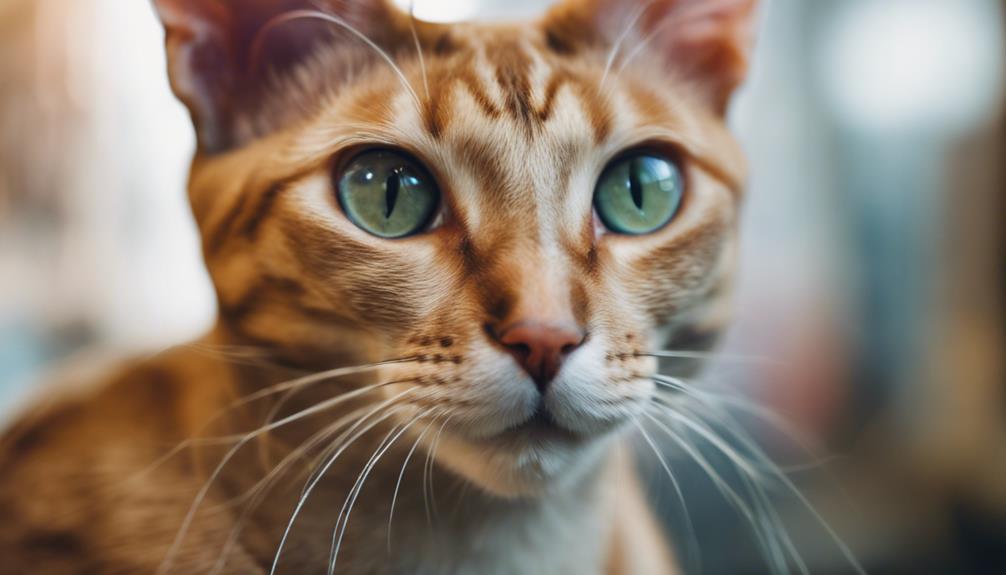
Deciphering the emotional significance behind Oriental cat meows involves keen observation of their tone, duration, and specific vocal patterns to understand their varying needs and feelings.
Oriental cat communication through meows can convey a wide range of emotions including hunger, loneliness, distress, or affection. The tone and duration of their meows can provide valuable insights into their emotional state, helping owners respond appropriately to their feline companions.
Different types of Oriental cat meows, such as short sharp meows or distinctive yowls, signify specific emotions or needs that the cat might be experiencing. Trilling sounds often indicate greetings or excitement, whereas chirping or chattering noises may be linked to prey behavior.
Managing Excessive Vocalizations in Orientals
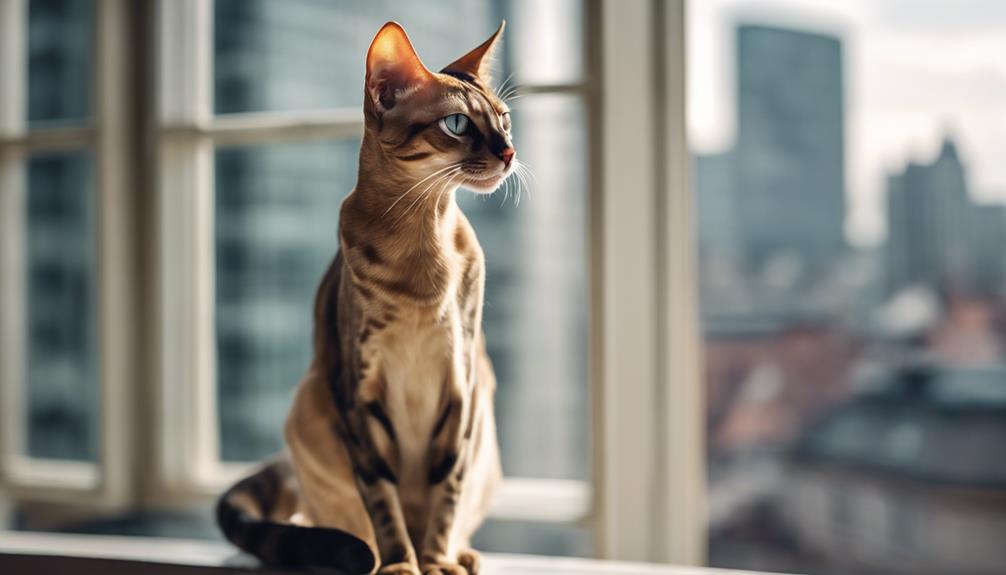
Identifying the root causes of excessive vocalizations in Oriental cats is crucial for effectively addressing and managing this behavior. When dealing with excessive vocalizations in Orientals, consider the following:
- Underlying Health Issues: Rule out any medical conditions by consulting a veterinarian to ensure your cat's well-being.
- Stress and Anxiety: Provide a calm environment and address any stressors that may be triggering vocalizations.
- Interactive Playtime and Mental Stimulation: Engage your Oriental cat in play sessions and provide toys to keep them mentally stimulated and physically active.
- Professional Help: If excessive vocalization persists, seek guidance from a veterinarian or animal behaviorist to determine the best course of action.
Interpreting Body Language Alongside Meows
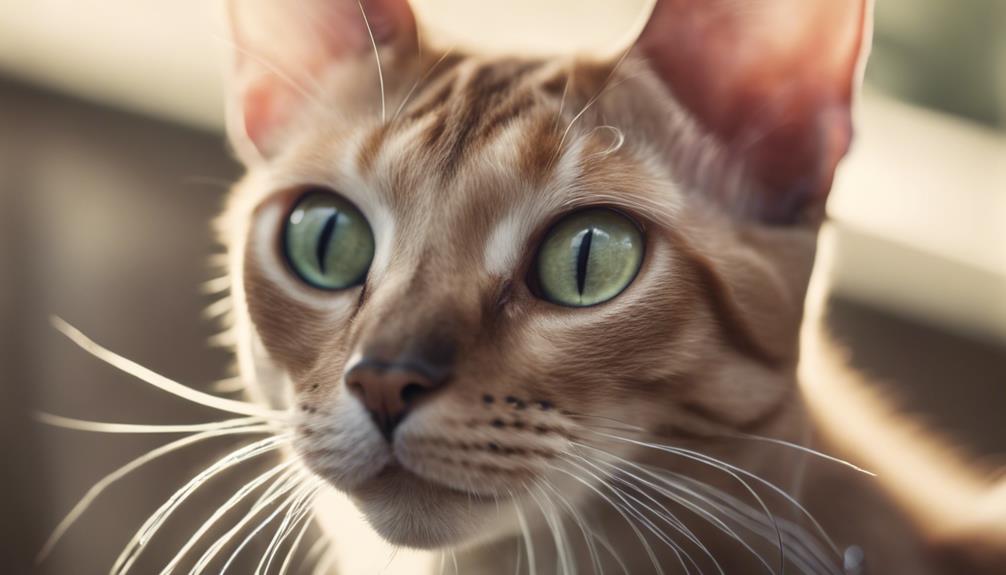
To better understand the needs and emotions of Oriental Shorthair cats, paying close attention to their body language alongside their meows is essential. Oriental Shorthair cats, known for their expressive nature, often use a combination of vocalizations and body cues to convey their feelings and desires effectively. Interpreting their body language, especially focusing on tail position and movements, can provide valuable insights into their current emotional state. Here is a table summarizing how tail position and movements can help decipher the emotions behind the meows of Oriental Shorthair cats:
| Body Language | Tail Position | Tail Movements |
|---|---|---|
| Emotions | Indicates mood and emotion | Conveys excitement, aggression, or fear |
| Communication | Confidence, fear, or other emotions | Complements vocalizations for clearer understanding |
| Bond | Strengthens bond with owners | Aids in effective communication and mutual understanding |
Health Implications of Oriental Cat Vocalizations
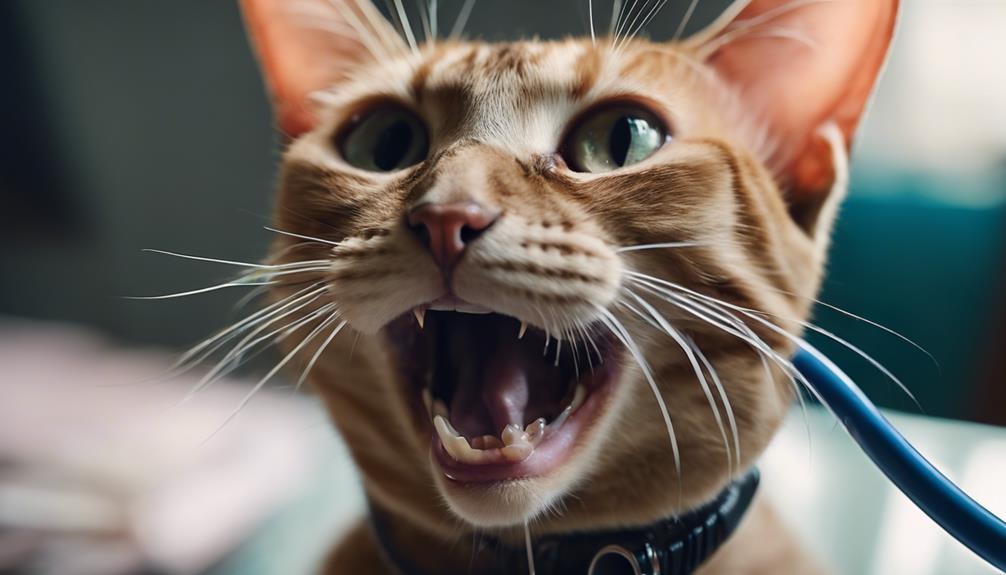
The health of Oriental cats can be closely linked to their vocalizations, serving as indicators of potential stress, anxiety, or underlying medical conditions. When it comes to understanding the vocal patterns of these felines, paying attention to their meows and sounds is crucial for overall well-being.
- Excessive meowing or unusual vocalizations could signal distress, anxiety, or health issues in Oriental cats.
- Changes in a cat's usual vocal patterns might indicate a need for a veterinary check-up to address any underlying medical conditions promptly.
- Vocalizations serve as a form of communication for Oriental cats to express discomfort or seek attention from their owners.
- Monitoring and interpreting your Oriental cat's vocalizations can provide valuable insights into their health status and help in early detection of potential health issues.
Frequently Asked Questions
Are Oriental Cats Talkative?
Oriental cats are talkative felines, often engaging in vocal communication through various meows and expressive sounds. Their meowing frequency and communicative gestures make them one of the most talkative breeds, conveying emotions and desires effectively.
What Are the Patterns of Cats Meowing?
Cats' meowing patterns include pitch variations, frequency range, and emotional cues. They use meows for communication, with meanings ranging from greetings to expressing discomfort. Vocalization styles adapt to social interactions, environmental influences, and even serve as health indicators.
Why Do Oriental Shorthairs Honk?
Oriental Shorthairs exhibit unique vocal quirks, including mysterious honks. Their communication style involves various sound patterns and pitch variations, setting them apart from other breeds. Understanding these feline language nuances enhances their bond with owners.
What Is the Behavior of an Oriental Cat?
Oriental cats exhibit playful antics, independent nature, affectionate cuddles, curious explorers, vocal greetings, energetic playtime, intelligent problem solvers, agile climbers, social butterflies, and graceful movements. Their behavior showcases a blend of feline traits and unique personalities.











